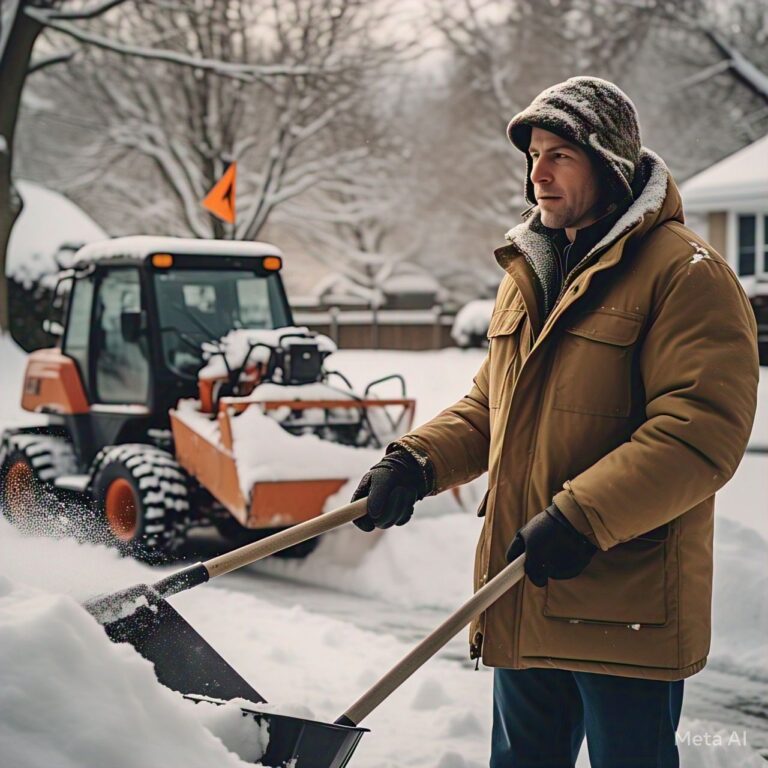Snow removal can be a daunting task, especially during harsh winter months. Renting snow removal equipment can provide a practical and cost-effective solution for both residential and commercial properties. With various options available, individuals and businesses can choose the right tools for their needs without the burden of a long-term commitment.
From snow blowers to heavy-duty plows, the selection of Snow Removal Equipment to Rent caters to different snow removal challenges. Many rental services offer flexible terms that allow users to pick up the equipment for the duration they need, ensuring efficiency in tackling snow accumulation. This flexibility can save time and effort when the winter weather becomes particularly severe.
Understanding the specific requirements for snow removal is crucial. By evaluating the area to be cleared and the amount of snowfall expected, individuals can make informed decisions about which equipment to rent. This approach not only enhances the effectiveness of snow removal efforts but also ensures safety during winter storms.
Types of Snow Removal Equipment
Various types of snow removal equipment cater to different needs, from small residential tasks to large commercial operations. Understanding these categories helps in selecting the right equipment for efficient snow management.
Small-Scale Equipment
Small-scale snow removal equipment is ideal for residential use and minor snowfalls. It includes snow shovels, snow blowers, and hand-powered tools.
- Snow Shovels: These are basic yet essential tools for personal snow removal. They come in various shapes, sizes, and materials, providing options suited to different snow types.
- Single-Stage Snow Blowers: Suitable for light snow, these models are easy to operate and maneuver. They gather and blow snow using an auger, making them user-friendly for quick tasks.
- Salt Spreaders: Although not for snow removal, they are crucial for preventing ice buildup on driveways and walkways. They can be handheld or towed behind a vehicle.
Commercial-Grade Equipment
Commercial-grade equipment is designed for larger snow removal jobs, such as parking lots and commercial properties. These machines offer increased efficiency and durability.
- Two-Stage Snow Blowers: These powerful machines can handle deeper snow with ease. The auger collects the snow, and an impeller throws it far away, allowing for quicker clearing.
- Walk-Behind Snow Plows: Ideal for business owners managing sidewalks and small lots, these machines provide a more efficient way to clear snow without physical strain.
- Heavy-Duty Snow Shovels and Rakes: Built for durability, these tools can withstand frequent use in harsh conditions, making them perfect for commercial applications.
Heavy-Duty Machinery
Heavy-duty machinery is necessary for large snow removal projects, capable of handling significant snowfall and large areas.
- Snow Plows: Mounted on trucks, these are essential for highways, large parking lots, and roads. They can push large volumes of snow efficiently.
- Front-End Loaders: Often used in municipal operations, they can scoop and transport snow. They are particularly effective for moving snow piles and managing larger jobs.
- Snow Melters: These machines are used to eliminate snow by melting it, providing a permanent solution for snow management. They are ideal for urban areas with limited space for snow storage.
Choosing the Right Equipment
Selecting the appropriate snow removal equipment is essential for efficiency and safety. Key factors include understanding specific requirements and the implications of rental agreements. Safety should always be a priority when operating any snow removal machinery.
Assessing Your Needs
Before renting equipment, it is crucial to assess the specific needs of the snow removal task. Factors such as the size of the area to be cleared, the type of snow, and the frequency of use should be considered.
For larger commercial spaces, snow plows or front loaders may be necessary. For residential properties, a snow blower or even a shovel might suffice. Determine whether the snow is wet and heavy or light and powdery, as this impacts equipment efficiency.
Consider also any obstacles in the area, like parked cars or landscaping. These factors will dictate the type of machinery that would best suit the job.
Understanding Rental Agreements
Understanding rental agreements is vital to avoid unexpected costs or issues. Familiarize yourself with the terms regarding rental duration, pricing, and insurance obligations.
Review the cost structure. Some companies provide a flat rate, while others may charge by the hour or day. Check for any additional fees for delivery or maintenance.
Ensure clarity on the damage policy. Understand what constitutes normal wear and tear versus damage that may incur charges. Having a detailed rental agreement helps protect both the renter and the rental company.
Safety Considerations
Safety is paramount when operating snow removal equipment. Proper training on the specific machinery is important to ensure safe operation. Inquire if the rental company offers any training or guidelines.
Personal protective equipment (PPE) such as gloves and boots should be worn to prevent injuries. Operators should also be aware of their surroundings and the potential for slipping on ice while maneuvering the equipment.
Regular checks of the equipment for proper functioning can reduce the risk of accidents. Be aware of any safety features available on the machinery, such as emergency shut-off switches or lights for visibility in low-light conditions.
